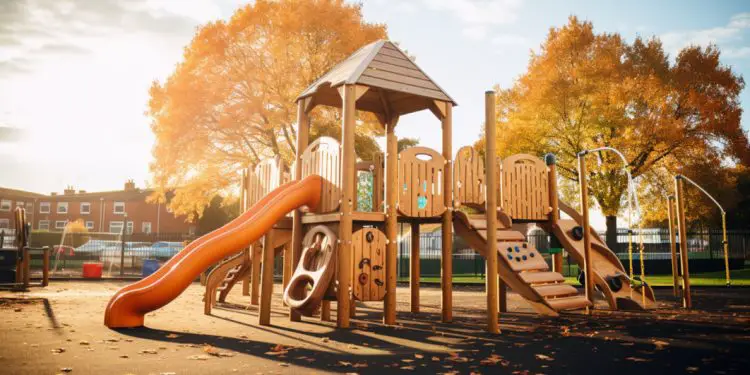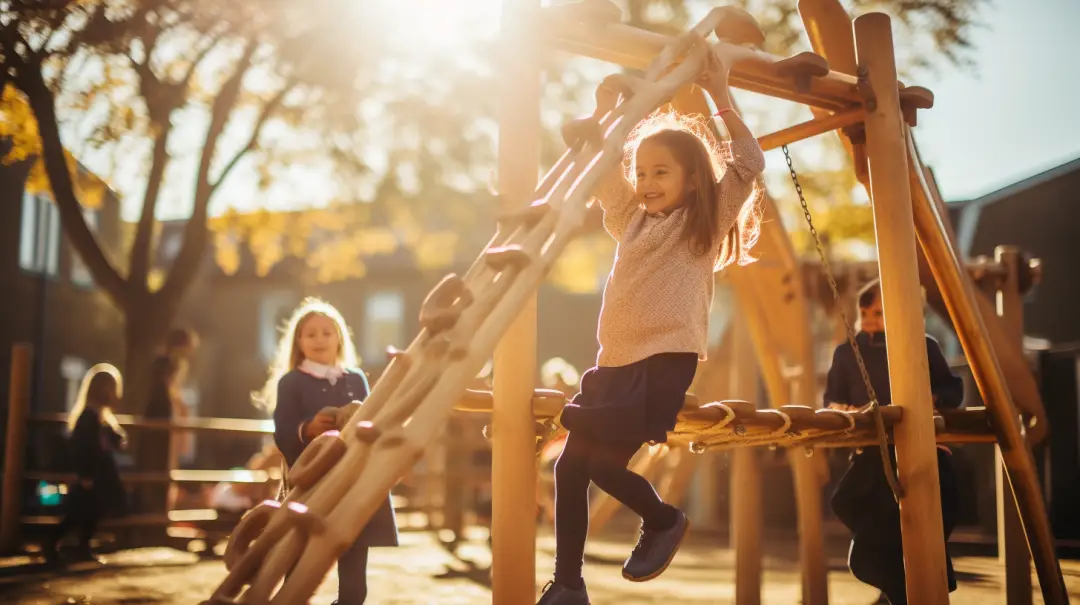Play Equipment for Schools: A Game-Changer in Education

A Playful Approach to Holistic Development
If you’re an educator, you’ve probably noticed that children are naturally drawn to play. From swings to slides and everything in between, play equipment offers an enriching experience that extends far beyond mere amusement. Let’s talk about how these playground staples contribute to physical well-being, cognitive development, and social skills.
Physical Health Benefits
First things first, let’s look at the obvious. Children need to move! Incorporating play equipment like climbing frames and jungle gyms in schools provides a great opportunity for physical exercise. We’re not just talking about burning off some pent-up energy here; we’re referring to genuine cardiovascular activity and muscle development. Even more basic equipment like swings helps improve balance and coordination.
Cognitive and Creativity Boost
Ever watched children pretending to be pirates on a play ship or creating an imaginary world in a sandbox? Well, that’s cognitive development and creativity at work. When children play, they’re not only having fun but also exercising their imagination, problem-solving skills, and even mathematical reasoning. As educators, we should be facilitating this, not stifling it.
Promoting Social Skills and Teamwork
Picture this: a group of children playing a game of ‘Capture the Flag’ around the slide and swings. Sounds like fun, doesn’t it? But it’s not just about the game; it’s a lesson in teamwork, cooperation, and social skills. Sharing, taking turns, and even resolving conflicts are all lessons learned on the playground, and trust us, they’re as vital as any classroom instruction.
Safety First: What You Need to Know
While we’ve established that play equipment offers a wealth of benefits, we can’t ignore the subject of safety. Ensuring that the equipment is regularly inspected and meets safety regulations is crucial. Mats and soft landings can help reduce the risk of injuries, and fences can keep children within the safe boundary of the playground.
Choosing the Right Equipment: More Than Child’s Play
Selecting play equipment for a school playground isn’t as straightforward as it might seem. It’s not just about what looks fun; there’s a variety of factors to consider to ensure that you’re making a sound investment both in terms of safety and educational value. Here’s a more in-depth look at what you should keep in mind.
Age Appropriateness: The Goldilocks Principle
Remember Goldilocks? She tried three bowls of porridge until she found one that was ‘just right.’ Well, the same principle applies to play equipment. Different age groups have distinct developmental needs and physical abilities. Toddler-appropriate swings or low-level climbing frames may bore older children, while complicated structures may pose safety risks for younger kids. So, read the guidelines and make sure that what you’re choosing is ‘just right’ for the age group you’re catering to.
Inclusivity: Ensuring All Children Can Play
Inclusivity is more than just a buzzword; it’s a necessity. When selecting equipment, think about how accessible it is for children with various needs. For example, consider installing ramps next to steps for wheelchair access or using soft, rubber surfaces for safer play. Simple things like easy-to-grip handrails and auditory play features can also go a long way in ensuring that all children, regardless of their physical abilities, can join in the fun.
Durability: A Long-lasting Investment
Let’s be honest, kids can be a bit rough on play equipment. That’s why durability should be high on your list of criteria. Equipment made from high-quality materials like galvanised steel or durable plastics will withstand weather conditions and constant use far better than cheaper alternatives. The upfront cost might be higher, but consider it an investment in the future.
Thematic Relevance: Boost Learning Through Play
How about a jungle gym shaped like a pirate ship for a little imaginative play? Or perhaps number and alphabet patterns on stepping stones? Play equipment can be customised to align with educational themes, offering an extra layer of engagement and learning opportunities. While this may not be your primary concern, it’s certainly a nice touch if you can manage it.
Space Utilisation: Make Every Square Foot Count
Last but not least, consider how much space you have available. Your playground might not be able to accommodate a sprawling adventure park, but that doesn’t mean you can’t make effective use of the space you have. Multi-use equipment, like climbing frames that incorporate slides and tunnels, can offer a lot of play value without taking up a ton of room.
Choosing the right play equipment is crucial in creating a stimulating and safe environment for children. Each piece is more than just a toy; it’s a tool for physical, cognitive, and social development. So take your time, weigh your options, and make a choice that will enrich the lives of the children in your care.
An Investment Worth Making
Looking at the benefits and the lifelong skills children can acquire, the importance of having quality play equipment in schools is clear. And let’s not forget the sheer joy it brings. A happy child is an engaged child, and an engaged child is more likely to be a successful adult.
So the next time you’re pondering the school budget, consider investing in play equipment. It’s not just a playground; it’s a foundation for a brighter, better future.

![5 Best First Aid Training Organisations For Nurseries [2025 Review] (1)](https://www.on-magazine.co.uk/wp-content/uploads/5-Best-First-Aid-Training-Organisations-For-Nurseries-2025-Review-1-150x100.jpg)








